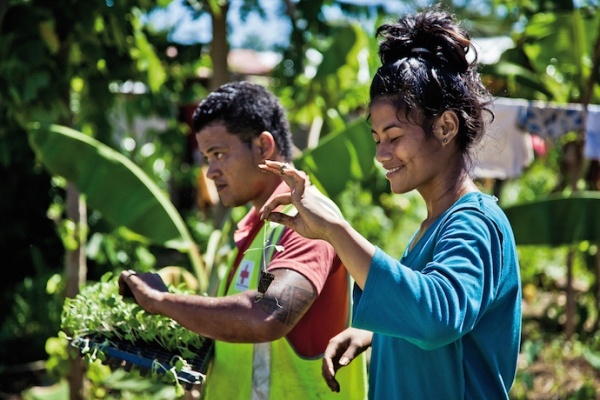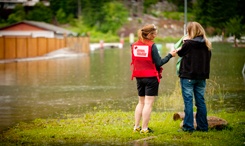This year's
World Disasters Report, released by the International Federation of Red Cross and Red Crescent Societies (IFRC), takes on a challenging theme of looking at how culture affects disaster risk reduction, and how disasters and risk influence culture.
Disaster risk and recovery projects are less effective if they do not take into account how culture affects the way people relate to risk, says the
2014 World Disasters Report. There is no single definition of culture. The report examines beliefs and behaviours relevant to risk and how people relate these to natural hazards; but social, political and organizational structures are part of the process by which culture is created.
The report asks, for example, what should be done when people blame their god or goddess for floods, volcanoes or other natural disasters. These examples from around the world clearly illustrate how cultural beliefs can influence people's perception of nature, natural hazards and the risks associated with these hazards. It's important for organizations involved in reducing disaster risks to recognize the impact of how people see the world and their belief systems. On the other hand, it's also noted in the report that religion and spiritually can often help people cope during disasters and provide a platform for education on reducing risks.

Photo credit: IFRC
In Canada, many believe that disasters are not likely to happen to us. Yet, Canadians have faced many
emergency situations in the past and recently, from floods to ice storms, to power outages and water supply problems.

According to 2012 polling by the Red Cross, two thirds of Canadians say they have not taken steps to prepare in the event of a disaster, like an earthquake. Most often they say it’s because they think it is unlikely to happen, or they haven’t thought about it. This is despite the fact that nearly half of Canadians have personally experienced at least two different types of disaster.
Understanding the
risks in your community, making a plan and having an emergency kit will help you be prepared.
This year’s report states the interaction between culture and risk relates to many aspects of behaviour, including religion (chapter 2), livelihoods and perception of risk (chapter 3), connection with others in communities and the significance of power relations (chapter 4), where people live and the effects of culture on construction (chapter 5), and health (chapter 6). The emphasis is on disaster preparedness rather than response. Check out the full report at
www.ifrc.org/wdr.
Visit
www.redcross.ca/ready for more information on disaster preparedness.